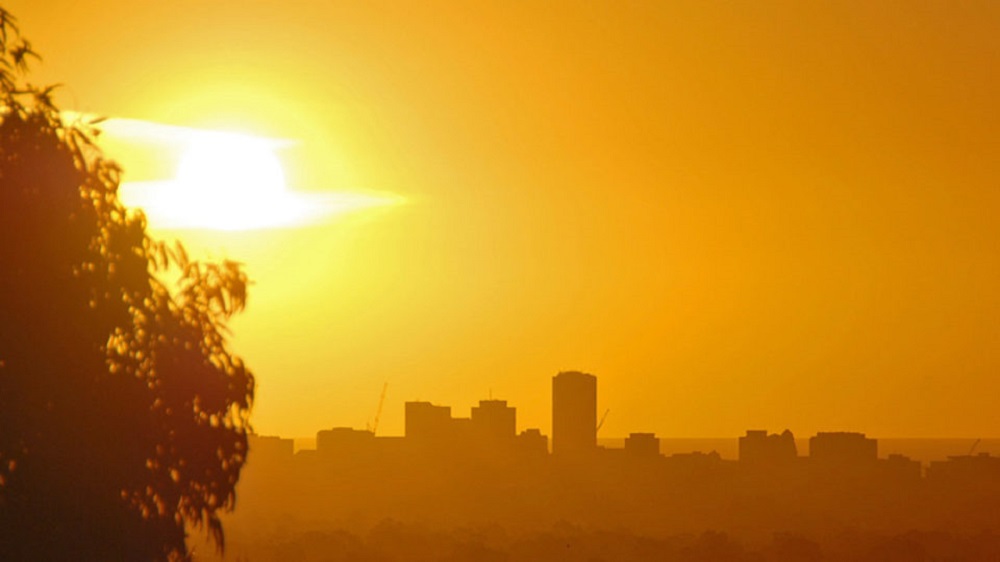Pakistan has passed its temperature inflection point and any further increase in average temperature will have a net negative effect on consumption expenditures, says the World Bank (WB).
The WB in its latest report titled, “South Asia’s Hotspots; the impact of temperature and precipitation changes on living standards”, stated that changes in average weather in the coming decades will have a clearly negative effect on living standards in Bangladesh, India, Pakistan, and Sri Lanka.
Overall, inland areas will be more severely affected than those near the coast. In India and Pakistan, water-stressed areas will be more adversely affected compared with the national average.
ALSO READ
Heatwaves to Increase as Annual Average Temperature Rises by 0.5°C in Pakistan
The report maintained that Sindh province emerges as the most vulnerable hotspot in Pakistan, followed by Punjab. Sindh has the second-largest economy, with a per capita GDP of $1,400, which is 35 percent more than the national average.
The province has a highly diversified economy ranging from heavy industry and finance centered in and around Karachi to a substantial agricultural base along the Indus River. Changes in average weather will add another dimension to the future growth of Sindh, given its high vulnerability.
Punjab Province, which is the most densely populated province, is also second-most vulnerable. Punjab has the largest economy in Pakistan (contributing 53.3 percent of Pakistan’s GDP), and overall has the lowest rate of poverty of all the provinces.
However, the prosperity is unevenly distributed throughout the province, with the northern portion being relatively well-off economically and the southern portion among the most impoverished in the country. Long-term climate vulnerability has implications for both growth and poverty reduction for Punjab.
Hyderabad District in Sindh emerges as the top hotspot followed by the districts of Mirpur Khas and Sukkur. Some of the densely populated cities in Punjab, including Lahore, Multan, and Faisalabad, emerge among the top 10 hotspot districts. This highlights the importance of addressing changes in average weather in the economically important Punjab and Sindh provinces.
In Pakistan, the analysis reveals that expanding electrification by 30 percent could reduce the impact of average weather on living standards from –2.9 percent to –2.5 percent. Thus, electrification alone may not completely overcome the negative effects of changes in average weather on living standards. This indicates that additional analysis could be warranted to better understand how to prevent the emergence of hotspots within the country.
Increasing education may reduce hotspots in some regions, even though the effect is not significant at the national level. This analysis, therefore, should be taken as an illustration of an array of various complementary policy and investment choices available for decision makers.
The temperature variability tends to be overestimated throughout the study region. The observations suggest that most of the variability occurs over Pakistan, Afghanistan, and northwest India, and decreases sharply toward the south. However, this region is not well covered by station observations.
The sharp difference in temperature variability between Afghanistan and Pakistan might be due to the complex topography of that region, but also may be due to the lack of station data over Afghanistan.
Western Afghanistan and southwestern Pakistan have experienced the largest increases, with annual average temperatures rising by 1.0°C to 3.0°C (1.8°F to 5.4°F) from 1950 to 2010. Southeastern India, western Sri Lanka, northern Pakistan, and eastern Nepal have all experienced increases of 1.0°C to 1.5°C (1.8°F to 2.7°F) over the same period. The precise magnitude of the estimated temperature changes varies across locations, but the direction of the changes is unambiguous.
ALSO READ
Record Breaking Rainfall Helps Ease Power Generation Problems: Report
Increasing evidence shows that changing temperatures and seasonal precipitation patterns have already altered the growing seasons of regions in Bangladesh, India, and Pakistan, and have resulted in serious health and productivity damages.
By 2050, under the carbon-intensive scenario, the declines are projected to be 6.7 percent for Bangladesh, 2.8 percent for India, 2.9 percent for Pakistan, and 7.0 percent for Sri Lanka
Hotspots are primarily predicted to occur in Bangladesh, India, Pakistan, and Sri Lanka. In these countries, projected changes in average weather are expected to result in an overall decrease in per capita consumption expenditures. The analyses do not include Bhutan and the Maldives because adequate climate projection data are not available.
Existing studies have looked at an array of economic impacts. In South Asia, losses are estimated at 0.3 percent in Sri Lanka, 0.4 percent in India, 0.9 percent in Pakistan, 1.6 percent in Nepal, and 3.5 percent in Bangladesh.
Nationally, Bangladesh, India, Pakistan, and Sri Lanka are already past their temperature inflection points. This intuitively makes sense given that these four countries have a warm climate. This means that at the national level, any further increase in average temperature will have a net negative effect on consumption expenditures.
Temperatures in Afghanistan and Nepal are still less than the inflection point, meaning that increases in temperatures are predicted to have a net positive effect on consumption. This can be also expected because Nepal overall has a cold climate and could potentially benefit from a warmer temperature, maintained the report.





























From where Dear Author, you have taken the statistics. Sindh has the second-largest economy, with a per capita GDP of $1,400, which is 35 percent more than the national average. I support the argument that Sindh has the second largest GDP per capita, but $1400 is not 35% higher that national average. Pakistan’s per capita GDP is more than $1500.